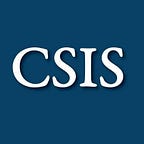What is the state of the current U.S. foreign assistance system? It’s complicated.
Adapted from the CSIS Task Force on Reforming and Reorganizing U.S. Foreign Assistance Report.
Under the FY2017 continuing resolution, the United States is on pace to spend $41 billion on foreign assistance. This is roughly in line with the past several fiscal years with the United States spending between $30 billion and $46 billion per year, depending on calculations of ODA versus other measures of foreign assistance.
These funds are spread across multiple broad accounts, as shown in the chart below:
Much of U.S. foreign assistance is programmed through the State Department and USAID, which together account for approximately 60 percent of the Foreign Operations Budget. USAID is the largest single development agency and is responsible for implementing all Development Assistance, International Disaster Assistance, Transition Initiatives, and a portion of the Global Health account. The State Department and USAID “comanage” the Economic Support Fund (ESF), Assistance for Europe, Eurasia, and Central Asia (AEECA), and the Democracy Fund program. According to USAID, it is responsible for implementing 90 percent of ESF programs, 70 percent of AEECA, and 40 percent of Democracy Fund programs; in addition, it implements 60 percent of President’s Emergency Fund for AIDS Relief (PEPFAR) funds appropriated to the State Department, and all funds appropriated to the Department of Agriculture through the Food for Peace (FFP) program.
This proliferation of institutions is a result of several factors, including a perceived weakness in how USAID approached certain issues and a belief that it was inefficient in the programs it did manage. In response, the Bush administration, for example, chose to create new institutions (e.g., MCC)or gave other agencies oversight of new assistance programs (e.g., State Department with PEPFAR).
The non-USAID foreign assistance proliferation phenomenon is not limited to USAID, MCC, and the State Department. In Iraq and Afghanistan, the Department of Defense assumed a much larger role in foreign assistance than it had in the past, partly due to frustration with USAID and the State Department’s limited ability to deploy staff and to manage reconstruction programs. DoD has long been responsible for implementing security assistance programs such as Foreign Military Financing (FMF) and International Military Education and Training (IMET), but 15 years of war produced a proliferation of nonmilitary assistance programs that were once the purview of the development agencies. This included the Commander’s Emergency Response Program (CERP), the Iraq Relief and Reconstruction Fund, and the Afghanistan Infrastructure Fund. These were all funded through DoD’s budget.
The Trump administration’s goals of effectiveness and efficiency are inversely related in longterm development programming. Large pipelines of unspent money in assistance programs do not necessarily mean they have more than enough funding or that they are inefficient. To get support and achieve local ownership, USAID must negotiate with government ministries, the private sector, and civil society groups or the programs will fail. Large infrastructure projects, for example, require life-of-project — not incremental — funding. Sometimes large pipelines reflect civil conflict interfering with assistance projects. The most disastrous mistake made during the Bush and Obama administrations was using the so-called “burn rate” to determine how efficiently and effectively reconstruction money was spent in Afghanistan and Iraq.
Ultimately, any credible reform effort — especially those arguing for a more robust role for USAID in the foreign assistance system — must recognize and address the underlying perception that USAID does not “coordinate well” in the interagency and chooses to operate in a world separate from the broader U.S. national security apparatus. For true reform to have long-lasting positive impact, USAID must rise to the task and address valid concerns from the Department of State and others over its capacity, direction, and important role in the broader U.S. national security picture. It also must clearly and honestly articulate what current development assistance tools can and cannot do, responding to unrealistic expectations and embracing the need for political and diplomatic engagement in the foreign assistance conversation. USAID must be seen as eager to cooperate and ready to assist in dealing with emerging threats and shifting priorities.
To learn more about the current state of foreign aid, as well as the rest of the task force’s work, read the full report here.
